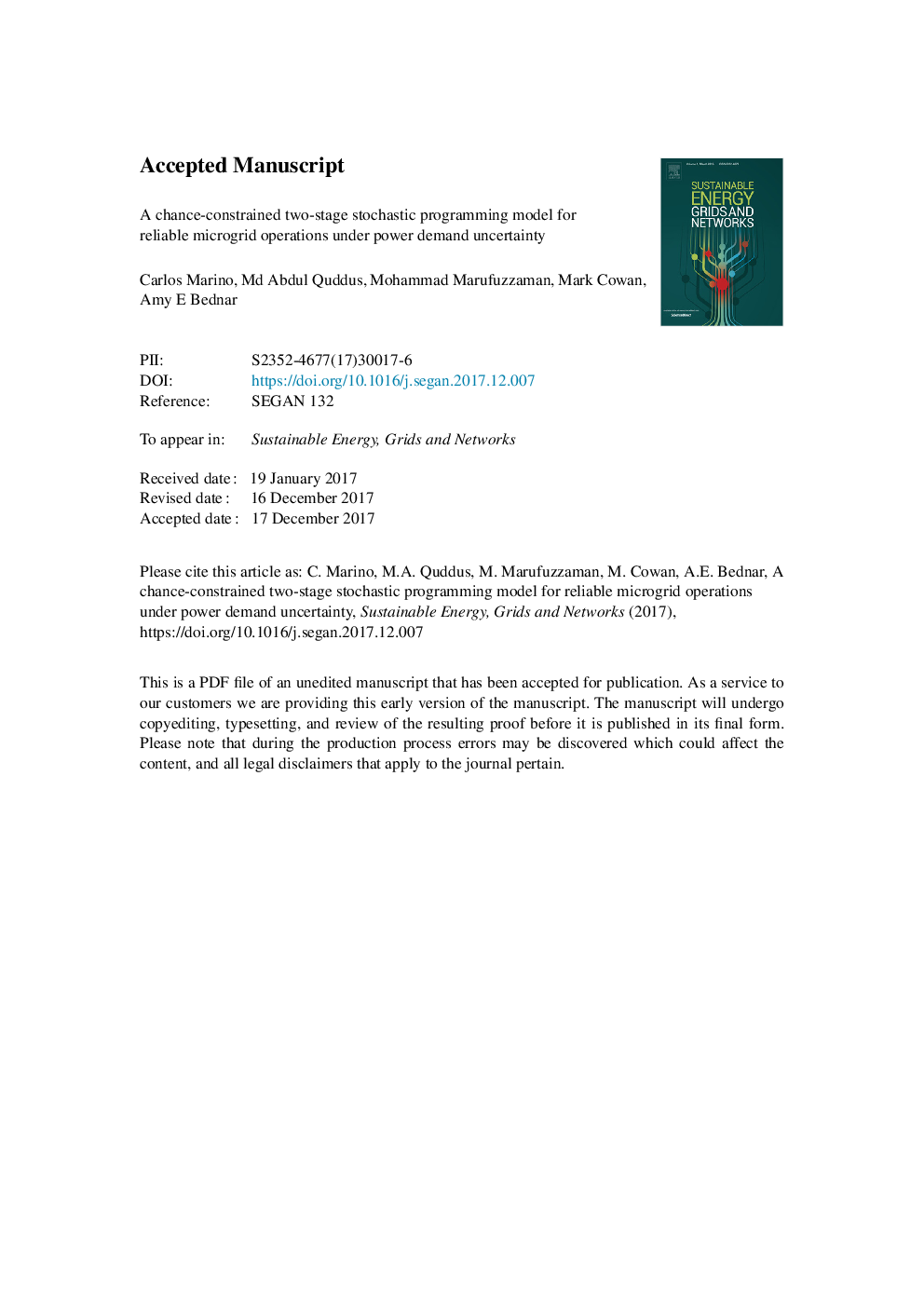| Article ID | Journal | Published Year | Pages | File Type |
|---|---|---|---|---|
| 6935448 | Sustainable Energy, Grids and Networks | 2018 | 33 Pages |
Abstract
In this study, we present a scalable quantitative modeling framework to evaluate the impacts of variability in renewable resources (e.g., solar energy) in the microgrid operation. The problem is formulated as a chance-constrained two-stage stochastic programming model. We use three different policies to ensure that the utilization of renewable energy is high in microgrid operations. More specifically, the first policy enforces a certain percentage of renewable energy utilization from the overall time period while the second and third policies enforce renewable energy utilization for specific hours and every operating hours, respectively. The proposed optimization model is solved using a combined Sample Average Approximation algorithm. Computational results indicate that policy three is more restrictive than the other two policies; thus, we observe high utilization of renewable energy resources in the microgrid operation under this policy. Further, we observe potential benefits of having solar panels under different fuel based generation (FBG) or distributed energy sources (DES) units on fulfilling the required energy demand during a power outage. Finally, the proposed model provides an optimal dispatch of available resources (e.g., renewable energy, DES, FBG units) in such a way that the overall microgrid operational cost is minimized.
Related Topics
Physical Sciences and Engineering
Computer Science
Computer Science Applications
Authors
Carlos Marino, Md Abdul Quddus, Mohammad Marufuzzaman, Mark Cowan, Amy E. Bednar,
